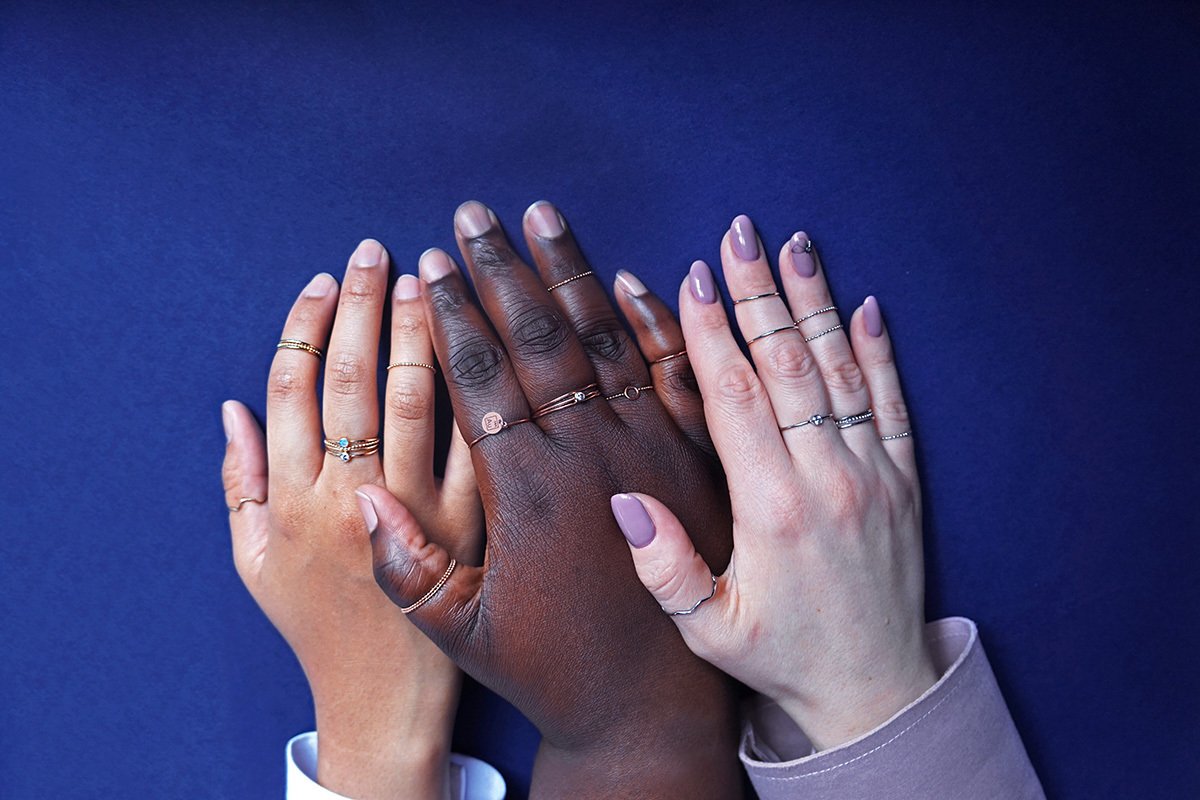
The disruptors: 3 ways United States jewelry brands are challenging the industry’s norms
Table of content
The American jewelry industry is marked by the presence of iconic brands, like the world famous Tiffany & Co., international heritage names like Cartier, Van Cleef and Arpels, and, of course, unbranded jewelry that continues to dominate the world.
Still, as consumers’ priorities are shifting, fresh designers and digitally native brands are focusing on more than the products they sell. Names like Fox & Bond, Awe Inspired, Sarah Handler, Atomic Gold have inclusivity and responsibility in their DNAs. By using historical and cultural elements, as well as representations of different individuals, they connect with buyers across different channels, offering them engagement, transparency and proving they can respect and care for their values. These are the game changers.
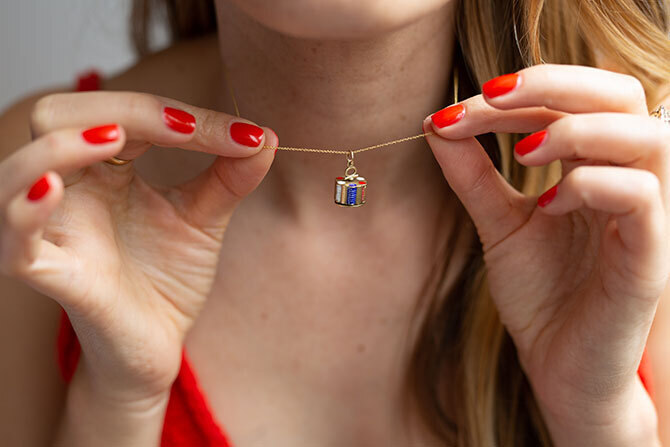
Image credit : Fox&Bond "Vintage Charm Jewelry" (JCK)
The transformation starts with younger consumers
Generation Z is what leads the transformation of different industries and jewelry is no exception. Its members may not be the most profitable, they might not even afford some brands and products, but they are the most influential. People in their late teens and 20s are impacting the way older generations make decisions. Vocal about their likes and dislikes, they interact with relatives, friends, work colleagues, and often share their beliefs.
They are digital natives, as they grew up in a world powered by the Internet and smartphones. Ever since their early days, technology has offered them the opportunity to connect with anyone and everyone, no matter the distance. This is why Gen Z-ers are significantly more interested in global affairs and in what is happening around the world. According to Pew Research, in America, Generation Z is the most racially and ethnically diverse and will soon be the best educated of all.
Similarly to Millennials, Generation Z has a progressive outlook on life, appreciates the United States’ racial and ethnic diversity and doesn’t see the nation as being superior to others. Moreover, its members expect the government, and not corporate structures, to make a change in the world and society. More than half of Gen Z-ers and Millennials consider that climate change is due to human activity, which makes them more interested in their impact on the world and on the environment.
When it comes to gender roles, the two generations are less likely than their older peers to say that single women raising children or same sex marriages are bad for society. They are more open to diversity, with 35% of Generation Z members saying they personally know someone that prefers to go by gender-neutral pronouns, compared to 25% of Millennials, 16% of X-ers and 12% of Boomers.
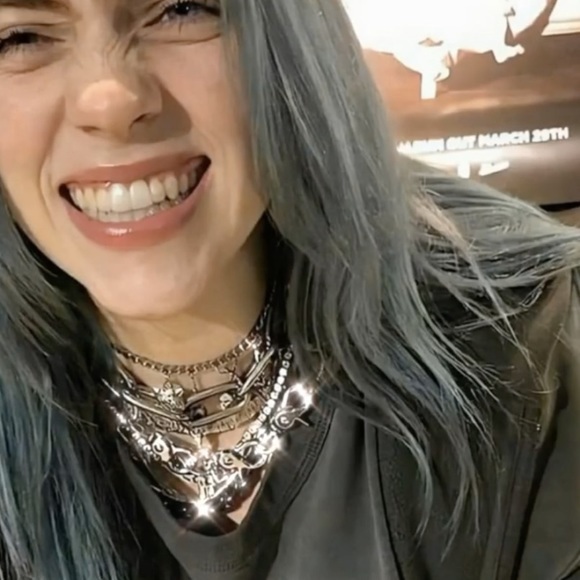
Image credit : Billie Eilish wearing DALMATA Jewelry
A brand that has charmed Generation Z members is LA-based DALMATA, a company that prides itself with an authentic point of vuew and unique sensitivity. The digitally-native jewelry company respects its audience’s values, by being against any form of racism, sexism, homophobia and transphobia, it is environmentally-concious and a good employer. Its avangardist business model, led solely by women, has attracted a fan base of musicians, such as Billie Eilish, Miley Cyrus and Lil Nas X. The brand consistently collaborates with POC costumers, to create new collaborations.

Image credit : Lil Nas' wearing DALMATA Jewelry
Disrupting brands target the disrupting generation : 4 trends
The same way Generation Z is disupting society as we know it, brands that want to appeal to them and remain in focus, over the next decades, are acting as industry disruptors.
1/ Disrupting brands acknowledge lab-grown diamonds
Lab-grown diamonds reached consumers around 2004, when they started being perceived as competition for natural gems. According to MVI Marketing, quoted by Forbes, 17 years ago, consumer awareness on the matter was assessed at 10%, while, in 2019, it grew to 60%.
According to De Beers research, in December 2020, two thirds of fine jewelry consumers were aware of the innovative lab-grown diamonds concept, while both affluent and non-affluent shoppers were interested in purchasing the laboratory developed stones. Unlike mined diamonds which are appreciated for their scarcity and their feeling of authenticity, lab-grown alternatives are defined as “new”, “modern”, “fun” and “fashionable”.
These types of stone are less associated with romance (just 6%, compared to 41% for mined diamonds) or with making someone feel special (3%, compared to 37%), but they are seen as excellent impulse, self-purchases, especially since they offer more value for money. Indeed, as Forbes reports, lab-grown diamonds cost 30% less, compared to natural ones, while their margins are 16-40% higher. Taking into account that, when buying an engagement ring, for example, consumers want the biggest stone they can get for their budget, lab-grown diamonds are an excellent alternative for jewelers which want to make a profit and serve their customers.

Image credit : The Natural Diamond Concil, (naturaldiamonds.com)
Up until recently, lab-grown diamonds were considered the innovative, more ethical choice, as discussions about exploiting communities made some audiences reticent to purchasing real gems. Being created synthetically, they appeared to be better for worldwide workers, but that positive perception has changed in the past year.
A strong argument that professionals pose is that switching to lab-grown diamonds would leave some communities without any income sources, affecting the lives of workers and their families. Moreover their carbon footprint is also a topic of discussion on the environmentalists’ agendas. As a consequence, according to the same De Beers report, compared to January 2020, 8% less respondents agreed that lab-grown diamonds were socially conscious and environmentally responsible.
Indeed, as with everything, using lab-grown diamonds has its pros and cons, but some things are certain: the world’s diamonds reserve is limited and will not keep up with consumers’ needs and the artificial gems have already made it on consumers’ shopping lists.

Image credit : Helzeberg diamonds proposal campaign
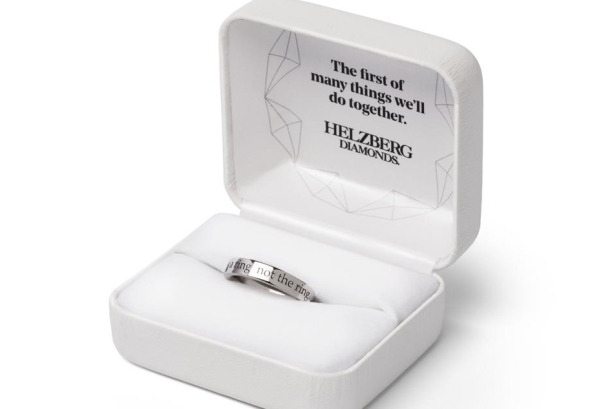
Image credit : Helzeberg Diamonds, "Will you ring ?" campaign
Nowadays, few real diamond sellers are carrying both natural and lab-grown diamonds. Traditional names include De Beers and Helzberg Diamonds, but, as consumer interest increases, the list will surely grow in the following years. Still, there are several new generation companies that are focusing on conflict-free stones. Brilliant Earth and Linhaus are some of the leading names in ethically-sourced jewelry. These companies sell their pieces for up to thousands of dollars, addressing medium and high income consumers.
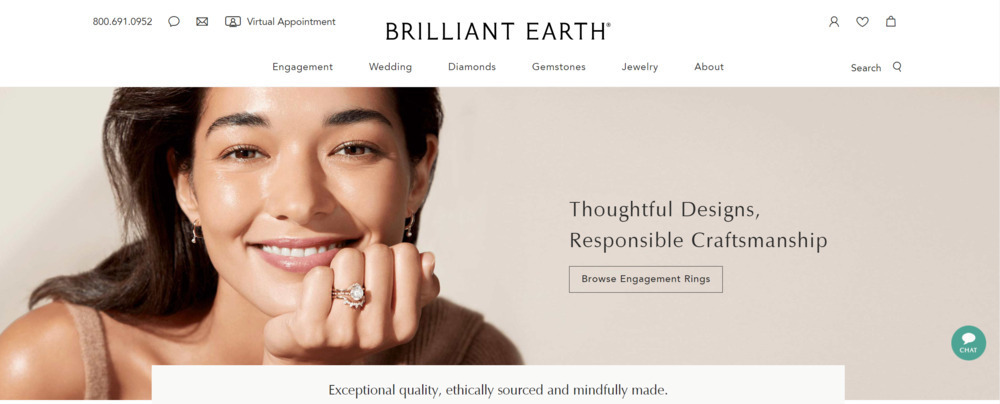
Image credit : Brilliant Earth website, Home page
2/ Jewelry stakeholders are challenging the limits of transparency and traceability
Nowadays, consumers are interested in knowing where everything, from their vegetables, to their diamonds, is sourced. Indeed, traceability has been an important topic for the industry’s stakeholders, and, according to industry voices, all players have their share of responsibilities in this regard.
Miners, refinery operators, alloy manufacturers, producers and retailers, as well as consumers should cooperate and communicate transparently, to eliminate, at least partially, the mystery and stigma, around sourcing precious metals and stones.

Image credit : Tracr Presentation DeBeers on Youtube : Diamond Experience & Connected Digital Grading Certificate
As blockchain technology is evolving, a more innovative transparent supply chain appears to be feasible. In 2018, De Beers Group launched Tracr, its blockchain platform that enables traceability. National Jeweler reports that the company is registering about 15% of its production on the platform. Even more, the De Beers retail stores are currently carrying the “1888 Master Diamonds” collection, which uses diamonds that are fully tracked and registered on Tracr.
Still, industry professionals are worried that, by imposing blockchain traceability, many producers would suffer, given that diamond mining is an industry filled with artisans and family-run businesses, which may not be able to afford the investment in new, hi-tech solutions. This is why jewelers advise producers and retailers to be transparent in every way possible, sharing with their consumers glimpses of each stage of production. A best practices example in this regard comes from Brooklyn-based brand, Wwake, which shared on Instagram photos and videos of a female bench jeweler setting a ring with diamonds and gemstones.
The moment was such a success with audiences that Instagram itself also posted photos from the atelier on its account. These forms of brand content might be a first step to more open communications between companies and consumers, thus satisfying at least, in part, the modern shopper’s need for openness and trust.
3/ Brands that want to make a positive shift in society are supporting LGBTQIA+ communities
Industry game changers understand that it is their responsibility to keep up with the world and society. Products and marketing campaigns need to reflect consumers as they really are, this is why inclusivity is key in today’s environment.

Image credit: Wwake Instagram , "Unfinished conversation Pearls Earings"
This is why De Beers acknowledges same-sex couples as strong diamond consumers. According to the company’s figures, 72% of Americans in same-sex relationships view diamonds as important in celebrating life’s special events and choose these precious gems when they want to showcase their feelings and celebrate memorable occasions. As the aforementioned research shows, same-sex couples are younger and more affluent than heterosexual ones, this is why they spend more on diamond gifts. When they shop, they very much prefer experiences that are tailored to their communities, as well as inclusive promotional campaigns from mainstream brands.
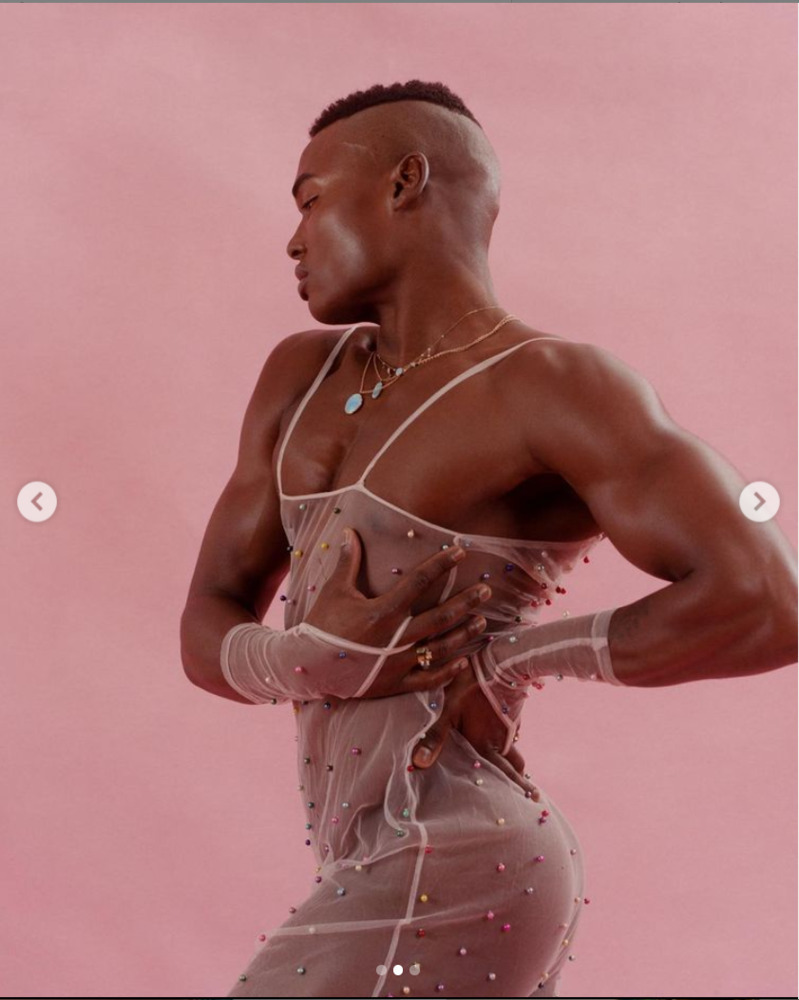
Image credit : POWER FEM shooting of Wwake. An answer to the question : "What is femnity?"
Tiffany & Co. is one of them. The company has supported the LGBTQIA+ communities and shown interest in adjusting its campaigns to make all consumers feel supported by the brand. In 2015, the iconic jewelry brand launched its first ever advertising campaign showing same-sex couples and filed an amicus brief with United States Supreme Court, supporting marriages between people of the same gender.

Image credit : Tiffany&Co. featuring its first Gay couple (Time Magazine, 2015)
Moreover, since 2019, the company no longer uses the word “bridal” to define engagement and couples’ rings and has a strong appearance in Pride Month parades. 2020 marked the launch of Tiffany & Co.’s first engagement ring collection for men, an important milestone for the company and the industry as a whole.
Still, things don’t end here. New, emerging designers and brands have also built good relationships with the LGBTQIA+ communities, offering gender fluid collections and donating part of their incomes to organizations that support their causes.

Image credit : The transgender model Indya Moore posing for the campaogn Tom+Lorenzo (Awe insipred jewelry)
Los Angeles-based Fox & Bond has created a A Rainbow Starburst Ring, which celebrates inclusivity. During Pride month, in 2021, the company donated 100% of proceeds for the product to the National Queer and Trans Therapists of Color Network.
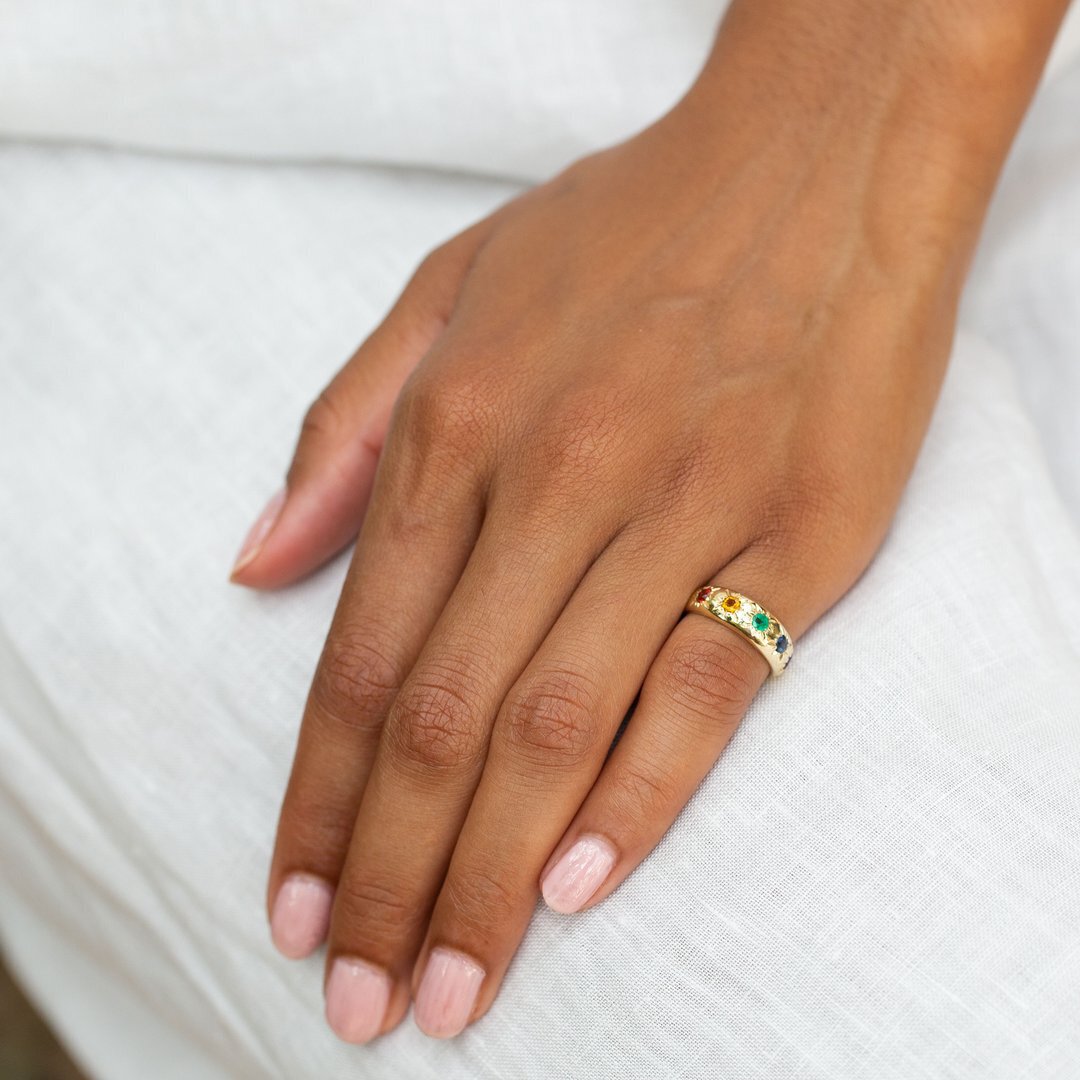
Image credit : Fox & Bond, Rainbow Starbust ring
Other brands, like Awe Inspired, Aureum Collective and Renna, have had similar initiatives, proving the inclusive character of jewelry disruptors.
4/ Responsible jewelry companies are making size-inclusive and body-positive jewelry a thing
For plus-size consumers, finding the right jewelry is complicated. A ring might not fit onto someone’s thicker fingers, while necklaces created for slim figures might not fall in the right spot for people with different body shapes. This means that mass market jewelry always needs accommodating and changing, which is often frustrating, especially is the result still isn’t right.
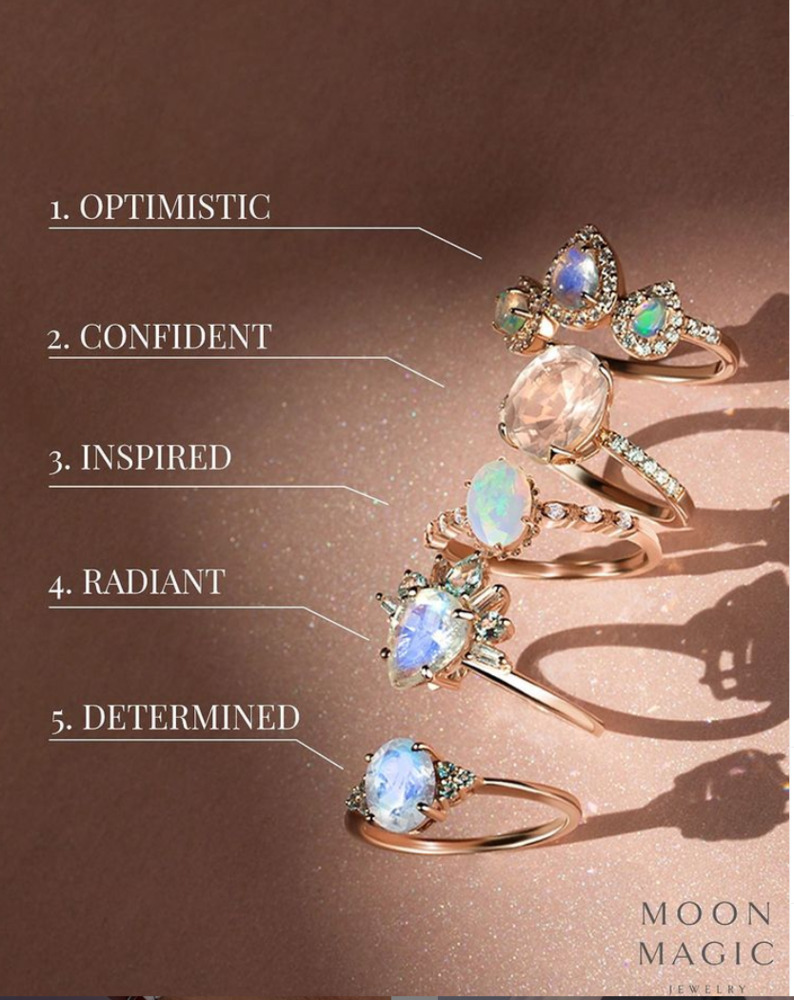
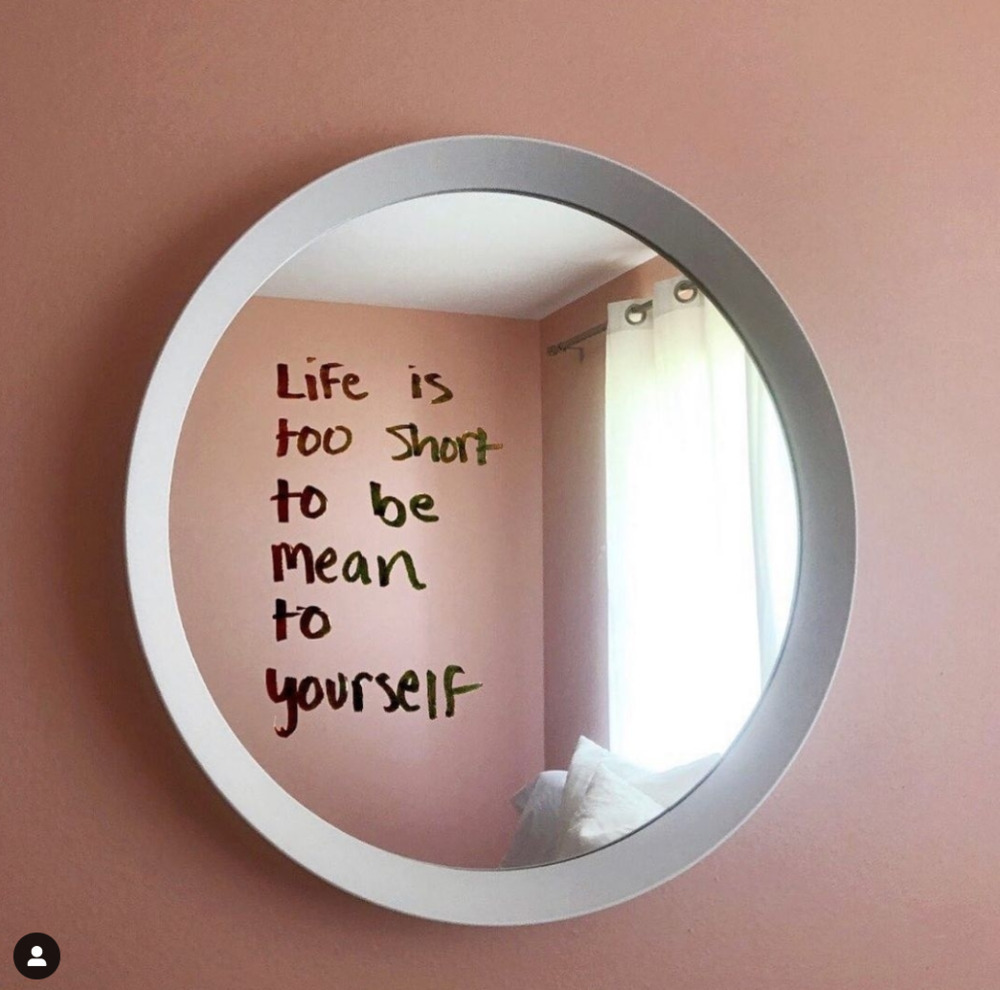
Image credit : Moon Magic Jewelry Instgram
Disrupting brands have started to address this issue and create pieces that not only fit, but also flatter plus sized consumers, empowering them and making them feel beautiful.
Automic gold is a company created by Millennials, which takes pride in its values and ethical practices. The company is honest when it comes to body images and doesn’t Photoshop photos, hires size-inclusive models of different ethnicities, clearly mentioning that it doesn’t do so “just for awareness months”. Its products are targeted at plus-sized diverse consumers, of all genders.
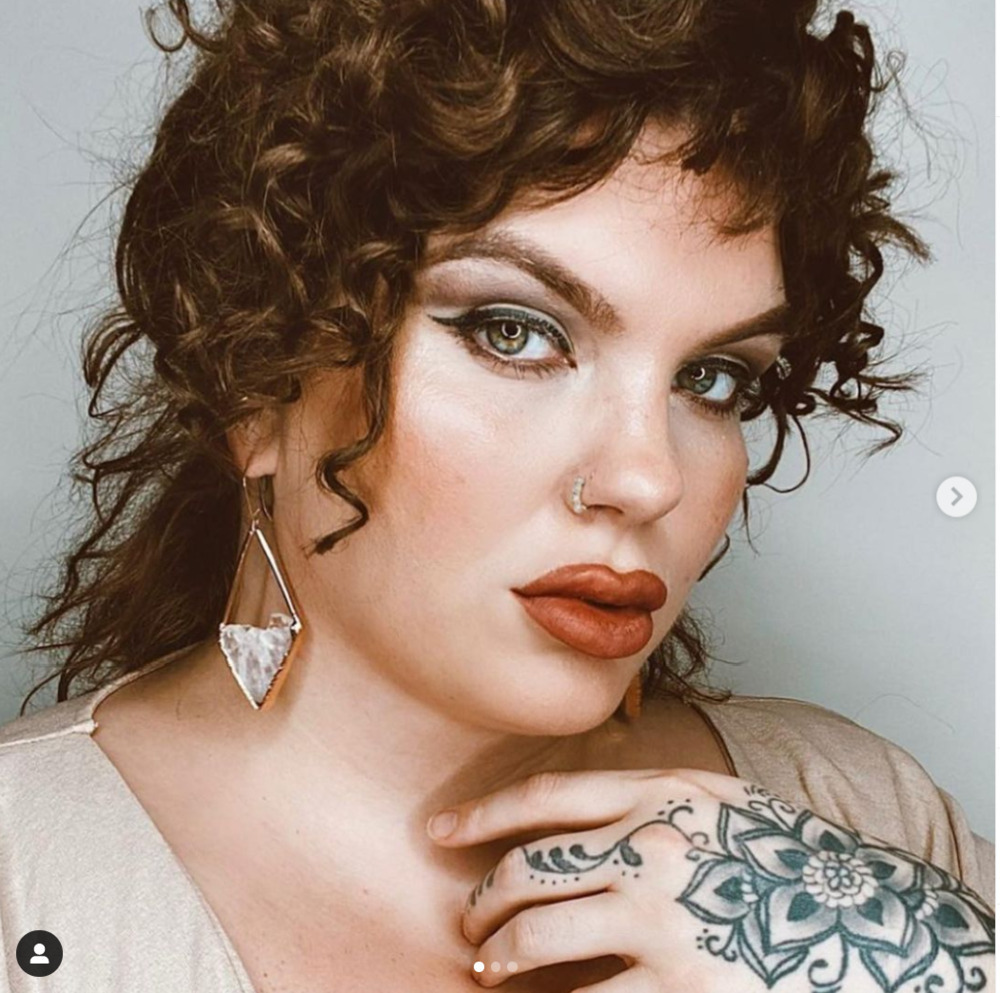
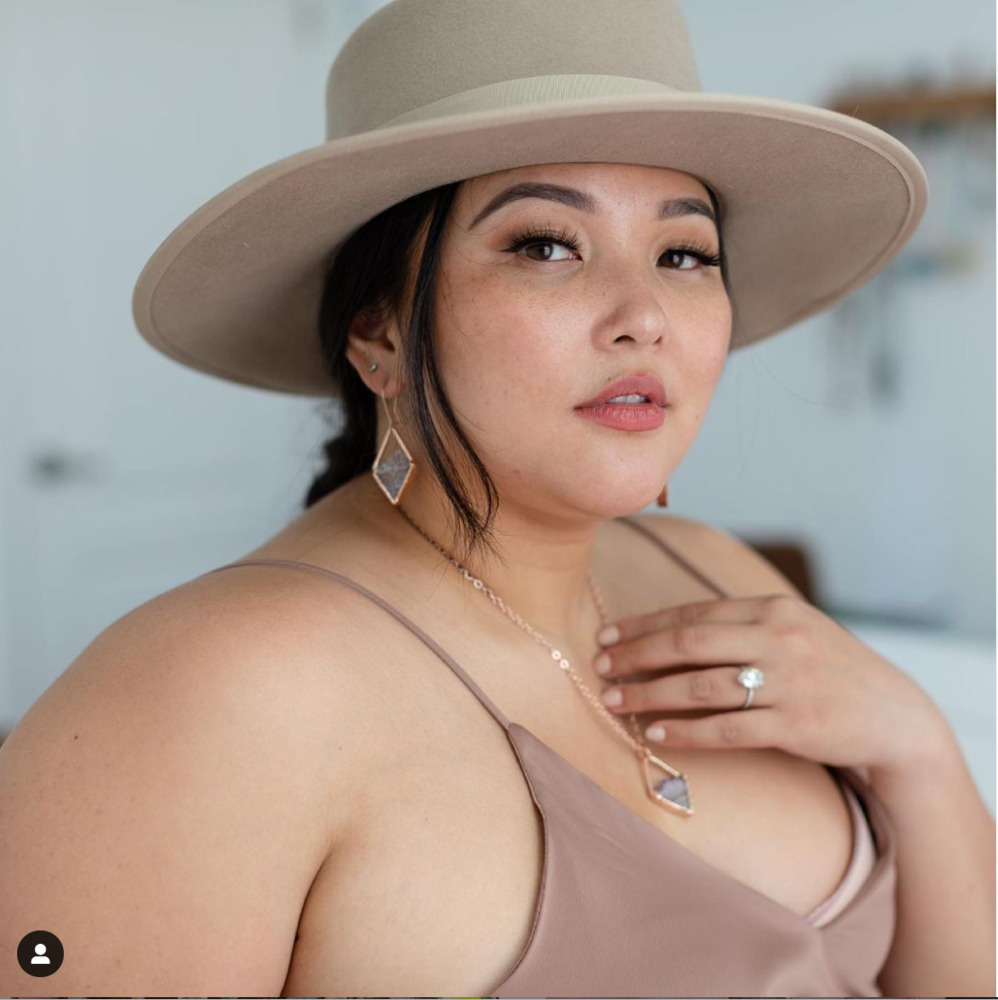
Image credit : Nature's Twist Instagram , Jewelry for all bodies
Other brands that create jewelry for shoppers with diverse bodies include Nature’s Twist, Moon Magic, Barbela Designs.
By Anne-Marie Diom, Ana Doaga - Fri Sep 24 2021